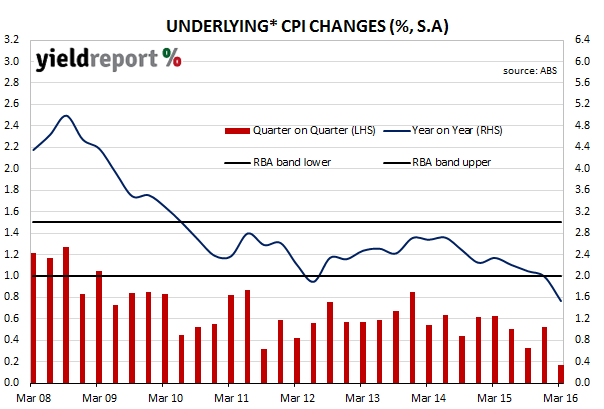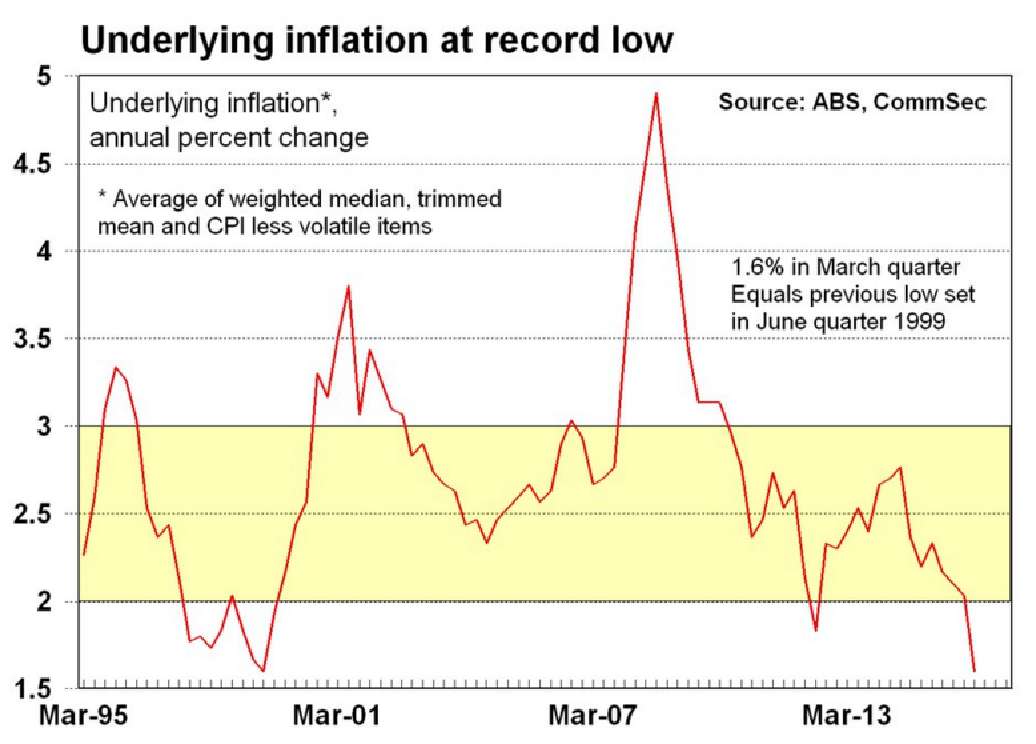March quarter CPI figures were released today showing a headline quarterly rate of inflation of -0.2% (seasonally adjusted) or 1.3% for the year to the end of March. This surprised markets which were expecting 0.2% for the headline rate and an annual inflation rate of 1.6% and it is the first negative headline CPI figure since December 2008. Some analysts have described the result as a game changer that will lead to a rate cut when the RBA meets on 3 May. JP Morgan’s Sally Auld said the RBA had ”no choice” but to cut rates next Tuesday.
Markets reacted swiftly. Cash markets, which had become accustomed to some chance of a rate cut this year, quickly switched to fully pricing in one rate cut by August and a 50% chance of a cut on 3 May. 10 year bond yields fell 12bps in afternoon trading and the Australian dollar fell 1.3 US cents as markets factored in lower rates than anticipated just a few hours earlier. Investment banks such as Goldman Sachs, JP Morgan and Macquarie now believe the CPI data should force the RBA to act on its easing bias and reduce rates at its next meeting.

*average of trimmed mean & weighted median CPI measures
Here’s a round-up of the views from leading economists:
JP Morgan’s Sally Auld: The RBA has “no choice” but to cut rates on Tuesday.
AMP Capital’s Shane Oliver: “Ultra weak inflation significantly ups the pressure on the RBA to cut rates again. I still see another easing ahead.”
UBS’s Scott Haslem: “Given 3% GDP growth and 5.7% unemployment, we doubt a short period of sub-target core CPI is a sufficient condition alone for the RBA to trim.”
Justin Fabo, former ANZ senior economist: A “difficult one for the RBA given the activity data have looked ok.”
Citi’s Josh Williamson: “So far the signs on the economy would suggest that another cut isn’t needed, particularly with unemployment at 5.7 per cent and the economy growing at around trend.”
Westpac’s Justin Smirk: “Low inflation, on its own, is not a trigger for a rate cut…A rate cut is dependent on local economic conditions demanding a rate cut. With unemployment on a new downtrend this is not so at the moment and we suggest that the RBA is waiting to see a new weaker trend in domestic activity and employment before it would embark on such a strategy.”


